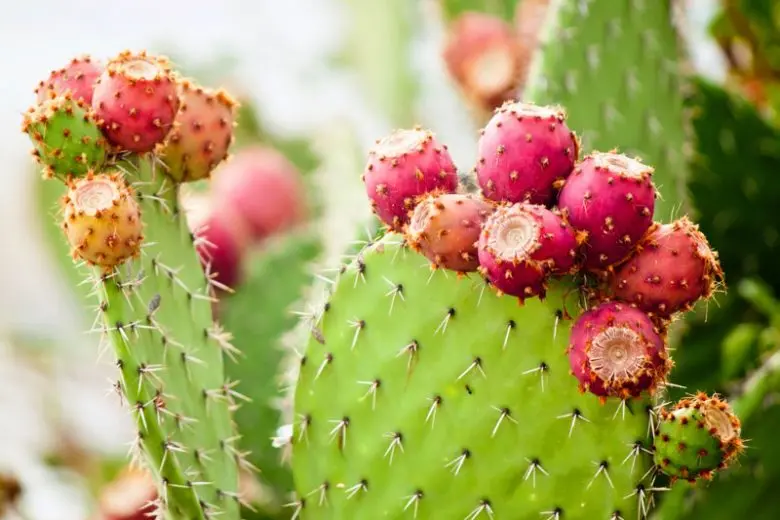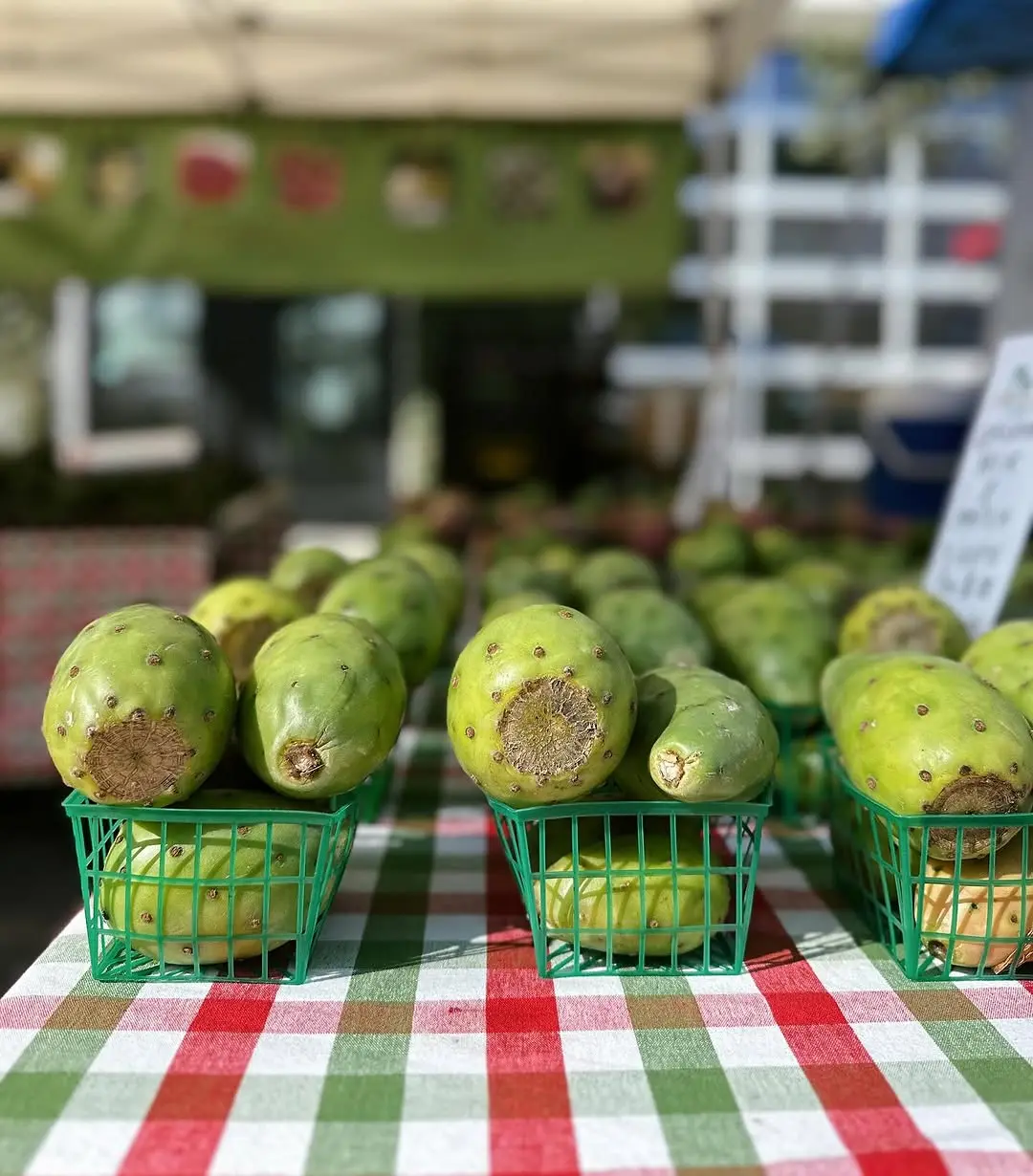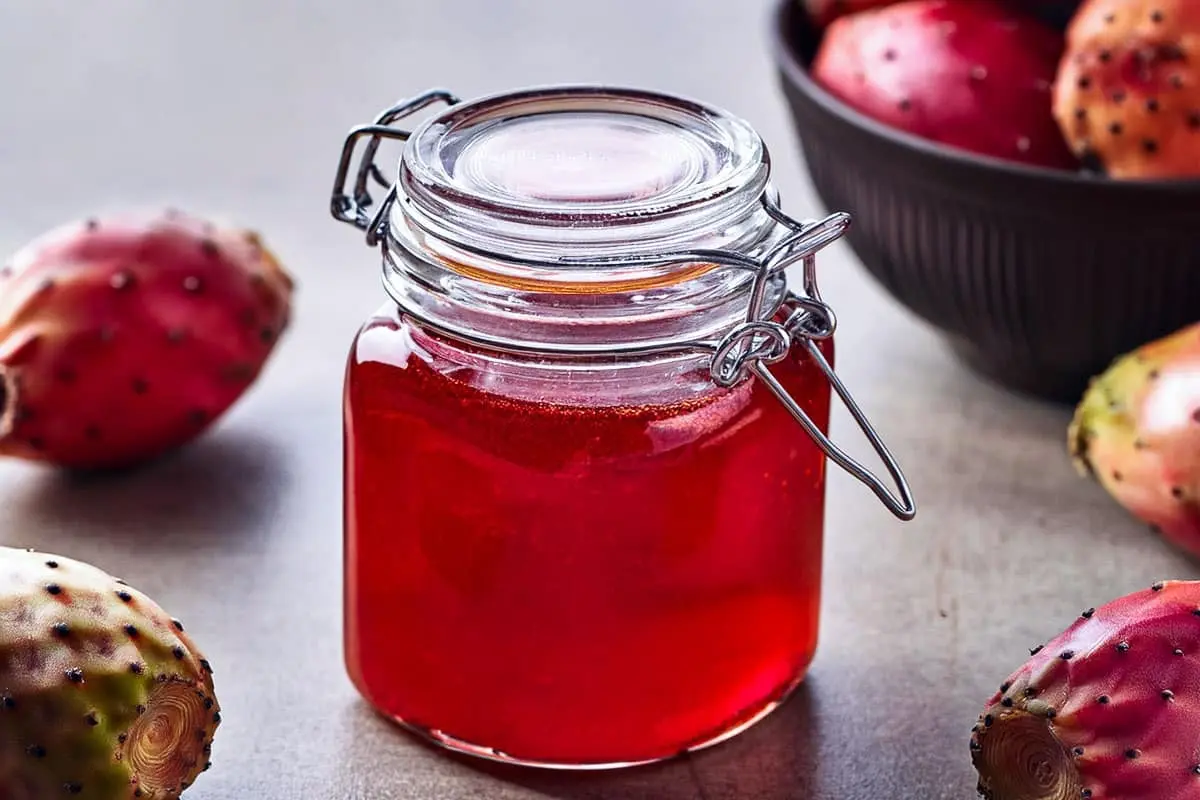Prickly pears, the vibrant magenta fruits of the prickly pear cactus, have a storied history and a unique flavor that has captivated many. Their striking appearance and delightful taste have made them a popular ingredient in various culinary creations. If you’ve never tried prickly pears before, making prickly pear syrup is a fantastic way to introduce this fascinating fruit into your kitchen.
What are Prickly Pears?

Prickly pears are the fruit of the prickly pear cactus, also known as “tunas” in Spanish. These fruits are characterized by their vibrant colors, which range from green to deep magenta. They are commonly found in arid regions, such as the Southwestern United States and Mexico. Despite their name and spiky exterior, the flesh inside is sweet and flavorful, often described as a cross between watermelon, bubblegum, and strawberries.
Nutritional Benefits
Prickly pears are not only delicious but also packed with nutrients. They are rich in dietary fiber, which aids in digestion and helps maintain a healthy weight. They also contain antioxidants, which can help protect the body from free radicals and reduce inflammation. Prickly pears are a good source of vitamins C and E, magnesium, potassium, and calcium. Including prickly pears in your diet can contribute to overall health and well-being.
Traditional Uses
Historically, prickly pears have been used for both culinary and medicinal purposes. Indigenous peoples of the Americas have utilized the fruit for centuries. They would eat the raw fruit, use it to make drinks, and create preserves. Medicinally, prickly pears were used to treat various ailments, including wounds, digestive issues, and inflammation. Today, they continue to be a valued component in traditional medicine and are being studied for their potential health benefits.
The Growing Popularity of Prickly Pears

Prickly pears have been a staple in Mexican cuisine for centuries, but they have recently gained popularity across the United States and beyond. You might spot them at your local farmer’s market or even in the tropical fruit section of your grocery store. They are increasingly featured in restaurant dishes and cocktails, most notably in the refreshing prickly pear margarita. The unique flavor and stunning color of prickly pears make them a favorite among chefs and mixologists alike.
Culinary Uses
The culinary uses of prickly pears are vast and varied. They can be eaten raw, turned into jams and jellies, or used as a flavoring in beverages. The fruit’s vibrant color makes it a popular choice for adding visual appeal to dishes. In savory applications, prickly pears can be used in salsas, salads, and marinades. Their sweetness pairs well with spicy and tangy flavors, creating a balanced and unique taste experience.
Prickly Pear Products
In addition to fresh fruit, prickly pears are available in various processed forms. You can find prickly pear juice, puree, and even dried prickly pear slices. These products make it easy to enjoy the flavor of prickly pears year-round and can be used in a wide range of recipes. Prickly pear supplements are also available, marketed for their potential health benefits.
Cultivating Prickly Pears

Growing prickly pears in your garden is relatively easy, especially if you live in a warm, dry climate. They are low-maintenance plants that thrive in poor soil and require minimal water. Not only do they add visual interest to your landscape with their distinctive paddle-shaped pads, but they also provide a bountiful harvest of delicious fruit.
Planting and Care
To grow prickly pears, start with a healthy pad, also known as a cladode. Plant the pad in well-draining soil and water sparingly. Prickly pears prefer full sun and can tolerate a range of temperatures, although they do best in arid or semi-arid climates. Once established, prickly pear cacti require little care. They are drought-tolerant and can thrive in conditions that would be challenging for other plants.
Harvesting the Fruit

Prickly pears typically ripen in late summer to early fall. When harvesting, it’s essential to handle the fruit carefully to avoid their spines and glochids—tiny, hair-like spines that can cause irritation. Wearing gloves and using tongs is recommended. Once harvested, the fruits can be stored in the refrigerator for several weeks. If you need to store them for longer, they can be kept in a cool, dark place for up to a month.
Making Prickly Pear Syrup

One of the most delightful ways to use prickly pears is by making a syrup. This versatile syrup can be used in a variety of ways, from sweetening cocktails and mocktails to drizzling over pancakes or ice cream. The process is simple and rewarding, resulting in a syrup that is not only delicious but also visually stunning.
Ingredients:
- 3 pounds prickly pears
- Water to cover
- 3 cups sugar
- 1 tablespoon citric acid, or the juice of 2 lemons
Instructions:
- Prepare the Prickly Pears: Begin by carefully peeling the prickly pears. Use a knife to slice off the ends and make a lengthwise cut through the skin. Peel away the skin to reveal the vibrant flesh inside. Chop the flesh into small pieces.
- Cook the Fruit: Place the prickly pear pieces in a large pot and add enough water to almost cover them. Cover the pot and bring the mixture to a boil. Once boiling, turn off the heat and let the fruit steep for 30 minutes.
- Mash and Strain: After steeping, use a potato masher to crush the fruit. Push the mashed fruit through a food mill to separate the seeds from the pulp. Strain the resulting juice through a fine-meshed strainer, then strain again using cheesecloth or a paper towel to ensure all glochids are removed.
- Sweeten the Syrup: Measure the strained juice and pour it into a clean pot. Add an equal amount of sugar (by volume) to the juice and bring it to a simmer over medium heat. Let it simmer for 5 minutes, stirring occasionally to dissolve the sugar completely.
- Add Acid for Balance: Turn off the heat and let the syrup cool for 15 minutes. Add citric acid or lemon juice a little at a time, tasting as you go, until the syrup has the desired level of tartness. The acid not only balances the sweetness but also helps preserve the syrup.
- Store the Syrup: Pour the hot syrup into clean Mason jars and seal them. The syrup will keep for several months in the refrigerator. For longer storage, process the jars in a boiling water bath for 10 minutes before storing them in the pantry.
Uses for Prickly Pear Syrup
The possibilities for using prickly pear syrup are endless. Here are a few ideas to get you started:
Cocktails and Mocktails
Mix the syrup with tequila for a classic prickly pear margarita, or use it in other cocktails and mocktails to add a unique flavor and beautiful color. The syrup can also be mixed with sparkling water for a refreshing, non-alcoholic prickly pear soda.
Prickly Pear Margarita

Ingredients:
- 2 oz tequila
- 1 oz prickly pear syrup
- 1 oz lime juice
- Ice
- Salt for rimming the glass (optional)
- Lime wedge for garnish
Instructions:
- Rim a glass with salt (if desired) and fill it with ice.
- In a shaker, combine tequila, prickly pear syrup, and lime juice.
- Shake well and strain into the prepared glass.
- Garnish with a lime wedge and serve.
Prickly Pear Soda

Ingredients:
- 1 oz prickly pear syrup
- 8 oz carbonated water
- Ice
Instructions:
- Fill a glass with ice.
- Add prickly pear syrup and carbonated water.
- Stir gently and enjoy.
Desserts
Drizzle the syrup over ice cream, pancakes, or waffles for a burst of flavor. It can also be used as a topping for yogurt or oatmeal. The vibrant color and sweet taste of prickly pear syrup can enhance a variety of desserts.
Prickly Pear Pancake Topping
Ingredients:
- 1 cup prickly pear syrup
- Pancakes (prepared as desired)
Instructions:
- Prepare pancakes according to your favorite recipe.
- Warm the prickly pear syrup slightly in a microwave or on the stove.
- Drizzle the warm syrup over the pancakes and serve.
Glazes and Sauces
Use the syrup to create a glaze for roasted meats or as a base for salad dressings. The sweet and tart flavor of the syrup pairs well with savory dishes, adding depth and complexity to your meals.
Prickly Pear Glaze for Roasted Meats
Ingredients:
- 1 cup prickly pear syrup
- 1 tablespoon soy sauce
- 1 tablespoon balsamic vinegar
- 1 teaspoon garlic powder
Instructions:
- Combine all ingredients in a small saucepan.
- Bring to a simmer over medium heat, stirring occasionally.
- Reduce the heat and let the glaze simmer until thickened, about 10 minutes.
- Brush the glaze over roasted meats during the last 15 minutes of cooking.
Prickly Pear Syrup in Culinary History
Prickly pear syrup has been used in traditional cuisines for centuries. In Mexican cuisine, it is often used to sweeten drinks and desserts. The syrup’s vibrant color and unique flavor have made it a cherished ingredient in many regional dishes. In recent years, chefs around the world have begun to experiment with prickly pear syrup, incorporating it into modern culinary creations.
Prickly Pear Syrup in Cocktails
One of the most popular uses of prickly pear syrup is in cocktails. The syrup’s bright color and sweet-tart flavor make it an excellent addition to a variety of drinks. From margaritas to mojitos, prickly pear syrup can elevate your cocktail game. Mixologists appreciate the syrup’s versatility and the visual appeal it adds to beverages.
Prickly Pear Syrup in Desserts
In desserts, prickly pear syrup can be used to add a burst of flavor and color. It is often used as a topping for ice cream, pancakes, and waffles. The syrup can also be incorporated into baked goods, such as cakes and cookies, for a unique twist. Its sweet and slightly tart flavor complements a variety of dessert ingredients, making it a versatile addition to any baker’s pantry.
Prickly Pear Syrup in Savory Dishes
Prickly pear syrup is not limited to sweet applications; it can also be used in savory dishes. Chefs have found that the syrup pairs well with meats, particularly pork and poultry. It can be used to create glazes and sauces that add depth and complexity to savory dishes. The syrup’s natural sweetness helps to balance out spicy and tangy flavors, making it a valuable ingredient in many culinary creations.
Conclusion
Prickly pear syrup is a versatile and delightful ingredient that can add a unique twist to a variety of dishes and beverages. Its vibrant color and sweet-tart flavor make it a favorite among chefs and home cooks alike. Whether you are looking to experiment with new cocktail recipes, create stunning desserts, or add depth to savory dishes, prickly pear syrup is a must-have in your kitchen. Give this simple recipe a try, and discover the delicious possibilities of prickly pear syrup for yourself.
Keep reading:

When you think of garlic, you probably imagine the classic bulbs with their papery white skins and individual cloves. But […]

Looking for the perfect Thanksgiving roasted vegetables to complete your holiday meal? This easy and delicious roasted vegetables recipe is […]

Acorn squash (Cucurbita pepo var. turbinata) is a popular winter squash known for its distinctive shape and rich, nutty flavor. […]

January may feel like the coldest month of the year, but it’s actually one of the best times to start […]
